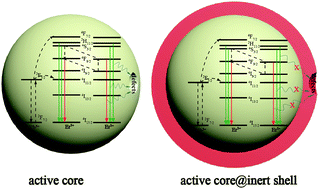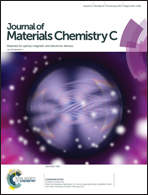Alleviating the emitter concentration effect on upconversion nanoparticles via an inert shell
Abstract
High emitter concentration in upconversion nanoparticles has rarely been studied, as it can not only decrease brightness, but can also change the emission color via altering the intensity ratio between different bands, imposing serious constraints on the content of lanthanide emitters to optimize upconversion. In this work, four sets of upconversion systems with the emitter concentration varying from 2 mol% to 20 mol% have been fabricated with ∼8 nm core and ∼10 nm core–shell nanoparticles. The epitaxial growth of an inert shell has been confirmed to greatly suppress the fast concentration quenching and significantly inhibit the integrity breakdown of the upconversion profile, achieving an improvement of upconversion quality. The mechanism of the inert shell to alleviate the concentration effect has further been proposed and the surface defects were proposed to greatly facilitate the occurrence of the concentration effect. The lifetimes of upconversion nanoparticles with different emitter concentrations have also been investigated for the core and core–shell nanoparticles. In addition, the relationship between the optical properties of nanoparticles and the thickness of the inert shell has further been unraveled.



 Please wait while we load your content...
Please wait while we load your content...